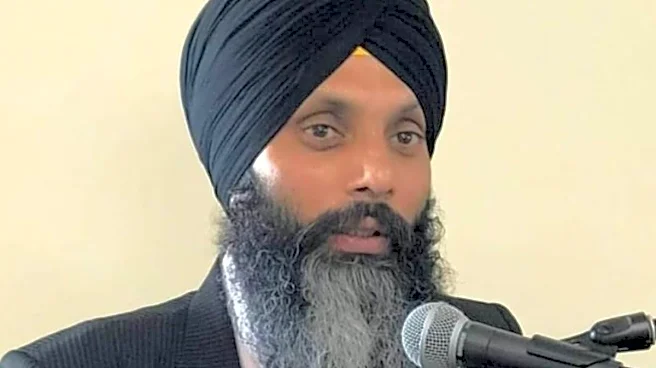Every year, thousands of Indian students pack their dreams and their documents to study abroad. The promise of world-class education, global exposure, and better opportunities has made countries like the US,
UK, Canada, Australia, and Germany the most sought-after study destinations.
However, the process is far from just filling out an application form. Securing a spot at your dream university involves extensive research, tests, documents, deadlines, and seemingly endless paperwork. It is not just an application form; it is a whole preparation that needs to start long before you begin.
But if you handle the groundwork that includes research, tests, and paperwork and more well in advance, the process becomes much smoother. Filling out the application then feels like a natural next step in your global journey.
Here’s a complete roadmap of what you need to prepare before you hit ‘Apply’.
Know Why You Want To Study Abroad?
Before you begin shortlisting universities, spend some time understanding your purpose. Studying abroad isn’t just about a fancy campus or the prestige of a global degree. It’s about finding a course that aligns with your career goals and personal growth.
Ask yourself: What do I want out of this experience? Is it a specialisation that’s not offered in India? The chance to work in a new market? Research opportunities or exposure to a new culture?
This clarity will not only help you choose the right course and country but will also form the backbone of your Statement of Purpose (SOP) later. Many students rush into the process without this self-reflection and end up with mismatched programs or misplaced expectations.
Find A College That Fits Your Goals
Once you know your goals, begin your research. Don’t just start with “top universities for Indian students.” Instead, reverse the process and look for programs that match your interest areas, teaching style, and career outcomes.
If you’re into computer science, for instance, some universities focus heavily on research (like the US or Germany), while others prioritise applied learning and internships (like Canada or Australia). Similarly, if you’re pursuing business, the UK’s one-year MBA may suit you better than the two-year US model.
Pay attention to:
- Course structure and duration
- Entry requirements and eligibility tests
- Living costs and part-time work rules
- Post-study work visas
Use reliable sources like EducationUSA, DAAD, and British Council to avoid falling for misleading consultancy promises. It’s also helpful to talk to alumni through LinkedIn — they’ll give you the kind of real-world insight no brochure ever will.
Elibility Tests You Must Clear To Study Overseas
This is one of the most crucial parts of your pre-application journey. Every international university uses standardised tests to gauge your academic readiness and English proficiency. Some of the tests which are accepted by most universities are listed below. Let’s break them down:
IELTS (International English Language Testing System)
Accepted almost universally, IELTS tests your reading, writing, listening, and speaking skills. It’s scored on a band scale of 1 to 9, and most universities expect a minimum of 6.5–7.5.
Start your prep 6–9 months early, especially for writing and speaking. The test is conducted both online and offline, and results are valid for two years.
TOEFL (Test of English as a Foreign Language)
Preferred by many US and Canadian universities, TOEFL is internet-based and evaluates your ability to understand and use English in academic settings. A score of 90–100 is generally considered competitive.
TOEFL test questions are more academic and lecture-based compared to IELTS, so if you’re more comfortable with American English, this might suit you better.
PTE Academic (Pearson Test of English)
A computer-based test that’s gaining traction, especially in Australia and the UK. It’s entirely AI-scored and provides results faster than IELTS or TOEFL — usually within 48 hours.
GRE (Graduate Record Examination): This test is essential for most STEM and master’s programs in the US and several other countries. The GRE measures analytical writing, verbal reasoning, and quantitative reasoning.
A competitive score (around 315+) can significantly boost your profile, and some universities even offer scholarships based on GRE performance.
GMAT (Graduate Management Admission Test): Required for MBA and business programs. It assesses analytical, writing, quantitative, and verbal reasoning. While many business schools now accept GRE scores, top-tier programs like Harvard, Wharton, and INSEAD still prefer GMAT. A score above 650–700 is considered strong.
SAT/ACT
For undergraduate applicants, particularly in the US. The SAT focuses on math and evidence-based reading and writing, while the ACT includes a science reasoning section. Many universities are now test-optional, but a good SAT/ACT score can still give you an edge.
Remember, the list of tests mentioned above isn’t exhaustive. Every university and sometimes even individual programs have their own eligibility criteria. Always check the official university website to confirm which tests you need to take and the minimum scores required. The score criteria can vary widely, even for the same test, depending on the course and country you’re applying to.
Tip: Book your test slots at least three months in advance, especially during peak application months (September–December). Keep in mind that you can retake these tests, but it’s best to plan early to avoid stress close to deadlines.
Key Documents You Need To Make Your Portfolio
Unlike India, most foreign universities don’t require a separate entrance exam to secure admission. The process isn’t about cracking a test like JEE or NEET, but about building a strong application portfolio that shows why you deserve a spot. This makes it one of the most crucial and often the most challenging stages of your study abroad journey.
Hence, as soon as your test prep gets in motion, start building your application portfolio — your academic and personal showcase. This usually includes your Statement of Purpose (SOP), Letters of Recommendation (LORs), and Resume or CV.
Statement Of Purpose (SOP)
Think of your SOP as your personal essay, a story that connects your past achievements, present interests, and future goals. Admission officers read hundreds of these, so honesty and clarity stand out more than fancy vocabulary.
A strong SOP answers three questions clearly:
- Why this course?
- Why this university?
- Why you?
Start early, and don’t copy templates. Universities can detect generic or AI-generated SOPs easily. If possible, get feedback from mentors or seniors who’ve studied abroad.
Letters Of Recommendation (LORs)
LORs validate your abilities from someone else’s perspective, a professor, mentor or employer. Choose recommenders who actually know your work and can provide specific examples of your strengths.
Even if your recommender already knows your work, it’s always helpful to share your resume, course details, and research proposal (if you’re applying for a research-based program). Give them enough time, at least a month, to craft a personalised letter. A well-written LOR not only adds credibility to your application but also helps you stand out from other candidates with similar scores.
Resume Or Academic CV
Unlike a job resume, this one highlights your academic achievements, internships, projects, research work, and extracurriculars. Keep it concise — ideally one page — and tailor it to reflect skills relevant to your course.
For creative fields like design or architecture, a portfolio of your work is equally vital. This could include projects, sketches, or case studies that reflect your creativity and skill growth over time.
Plan Your Finances And Scholarships
Studying abroad is a big investment. Tuition, living costs, insurance, and visa fees can add up quickly. Before you apply, calculate the total cost of your chosen programs.
Explore scholarship options like Chevening (UK), Fulbright-Nehru (US), DAAD (Germany), Inlaks, and university-specific merit-based grants. Many universities also have assistantships or research fellowships that cover tuition and living expenses.
If you’re taking a loan, start discussions with banks early. Most Indian banks like SBI, PNB, HDFC, and Tata Capital offer education loans for accredited global universities, but processing can take a few months.
Keep a financial buffer for unforeseen costs like visa delays, higher rent, or emergency expenses.
Get Your Documents Ready. As deadlines approach, you’ll need a checklist of essentials:
- Academic transcripts (attested copies)
- Test score reports
- SOP, LORs, Resume/CV
- Passport (valid for at least 6 months beyond your course start date)
- Financial proof (bank statements, loan sanction letters, scholarship proofs)
Scan and back up everything digitally. Many universities require you to upload these via online portals, so having them organised saves a lot of last-minute panic.
Timeline Is Important
If there’s one secret to a stress-free study abroad process, it’s starting early. Ideally, begin your prep 12–15 months before your intended intake.
That gives you enough time to research, prepare for tests, and gather documents without rushing. You can use a simple spreadsheet or planner to track deadlines — applications, test dates, recommendation submissions, and visa appointments.


/images/ppid_59c68470-image-176288002955646660.webp)


/images/ppid_a911dc6a-image-176281042896867113.webp)

/images/ppid_59c68470-image-176291502511280018.webp)

/images/ppid_59c68470-image-176284002797117597.webp)
/images/ppid_a911dc6a-image-176277142453129581.webp)


